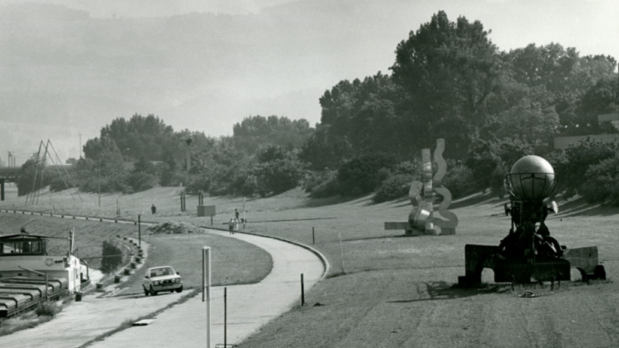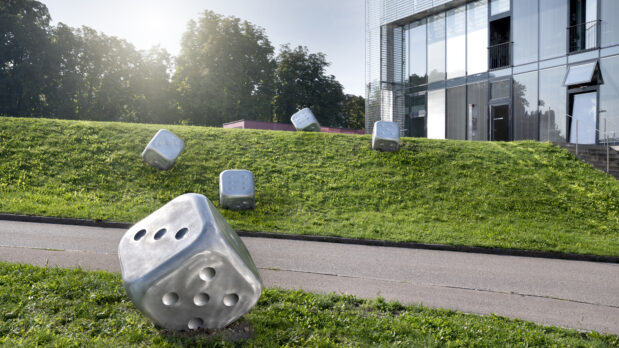
Forum Metall
The Forum Metall was founded in 1977 by Helmuth Gsöllpointner, at that time a professor at the College of Artistic and Industrial Design in Linz, and Peter Baum, the former head of the Neue Galerie der Stadt Linz and founding director of the Lentos Kunstmuseum as a park open to the public containing sculptures by domestic and international artists.
The aim was to combine the world of art with that of industry and commerce, thus emphasizing the importance of Linz as both an industry location and an up-and-coming centre of the arts. Internationally renowned artists such as Herbert Bayer, Max Bill, Mathias Goeritz, HausRucker-Co, Erwin Heerich, Donald Judd, Piotr Kowalski, Bernhard Luginbühl, Eduardo Paolozzi, David Rabinowitch, Erwin Reiter, Klaus Rinke and Günther Uecker were invited to create largescale sculptures for the park on the banks of the Danube in Linz. All the works were designed especially for Linz and constructed in Austrian workshops.
This unique symbiosis of art, industry and commerce made it possible to create an outstanding open air ensemble of modern art.

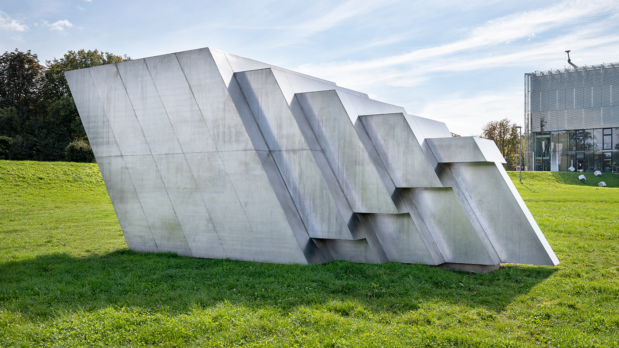
Helmuth Gsöllpointner, Evolution, 1979
The co-founder of Forum Metall, Helmuth Gsöllpointner, created the sculpture at the Donaulände based on a simple cubic form.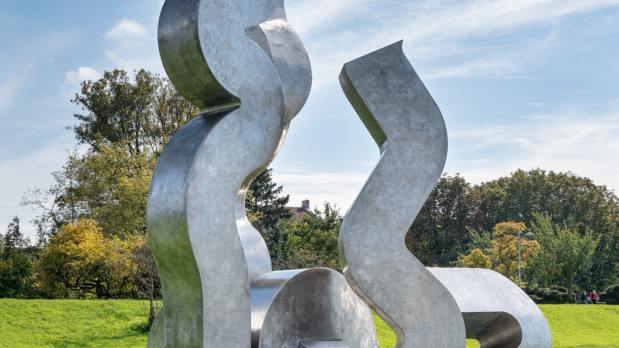
Erwin Reiter, Current, 1977
With Palozzi's collages of images from magazines and brochures he became one of the founders of English Pop Art. He created sculptures from scrap metal, objects he found and high-quality materials which deal with the subject of the aesthetics of machinery.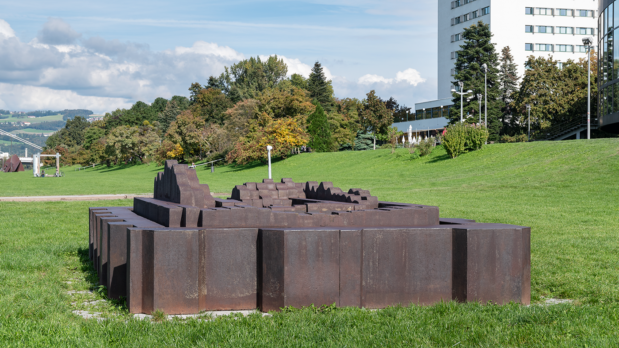
Eduardo Paolozzi, Hommage à Anton Bruckner, 1977
Durch seine Collagen aus Illustrierten und Prospekten wurde Palozzi zum Mitbegründer der englischen Pop-Art. Er formte aus Schrott, Fundstücken und hochwertigem Material Plastiken und Skulpturen, die sich mit der Thematik der Maschinenästhetik auseinandersetzen.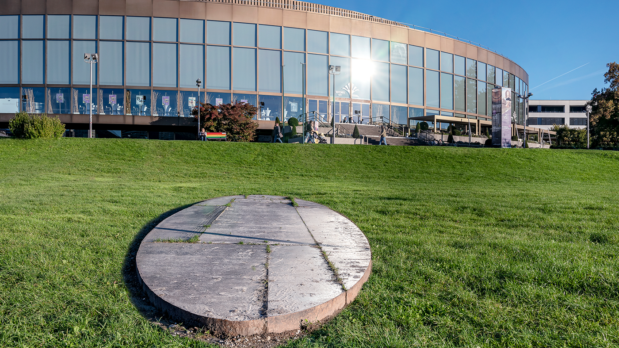
David Rabinowitch, Ellipse in 10 parts, 1974–77
The location of the "Ellipse" in 10 Parts was chosen so that the ellipse comes to rest exactly in the middle of the grass in front of the Brucknerhaus. Its formation corresponds to the sweeping curve of the long building.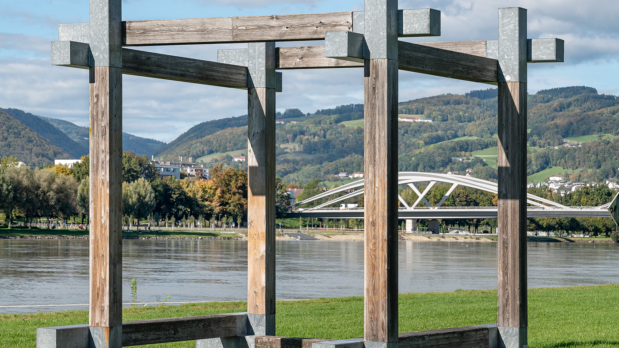
Max Bill, Pavilion sculpture III, 1977
The "Pavilion sculpture III" is based on the principle of the cube in connection with an examination of the subject of usable three-dimensional sculpture.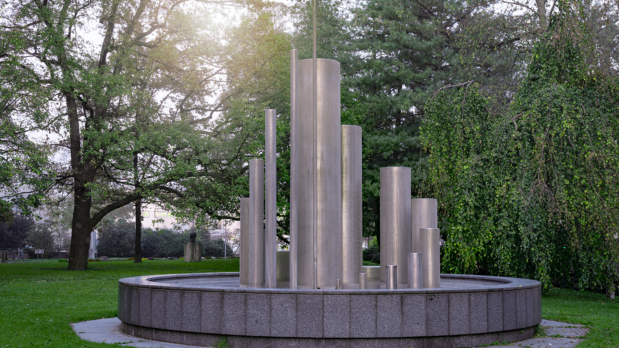
Herbert Bayer, Fountain Sculpture, 1977
The arrangement of the cylinders over which water flows represents a spiral turning in opposite directions and is based on a mathematical progression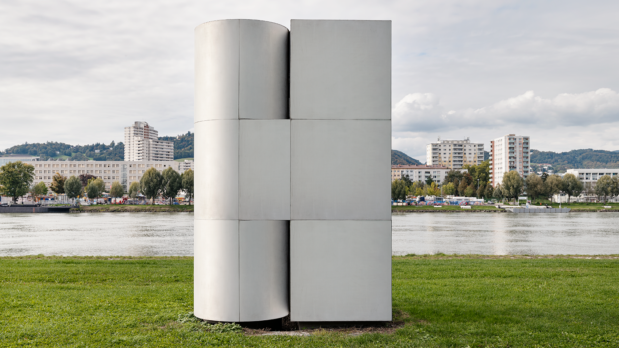
Erwin Heerich, Untitled, 1977
The Linz sculpture is characterized by mathematical calculation and threedimensional proportion. The aluminium object is based on basic geometric shapes and easily checkable laws.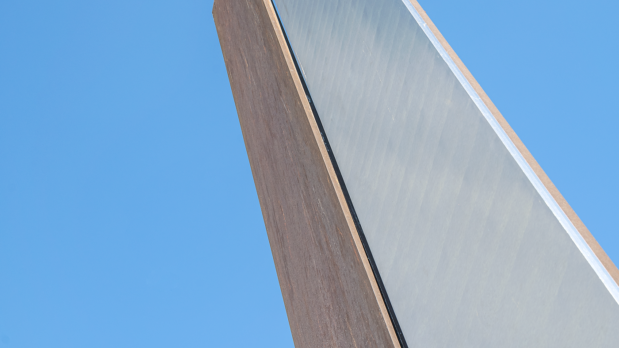
Piotr Kowalski, Thermocouple, 1977
For "Thermocouple" Kowalski used two different sorts of steel which were molecularly combined by means of rolling at very high temperatures. The two steel plates begin to move under the influence of heat or cold.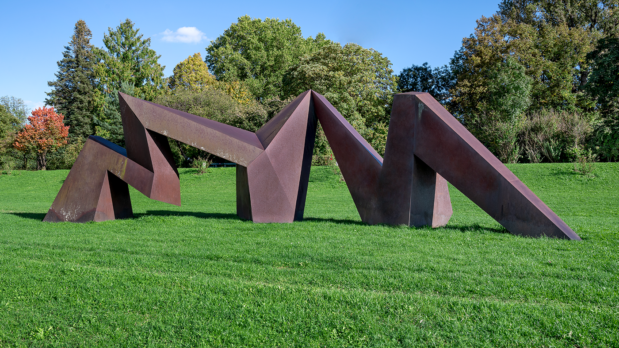
Mathias Goeritz, La Serpiente (Die Schlange), 1986 (Entwurf 1953)
Goeritz’ „La Serpiente“ besteht nach Aussage des Künstlers aus der Kombination einer Fieberkurve und prähispanischen Themen.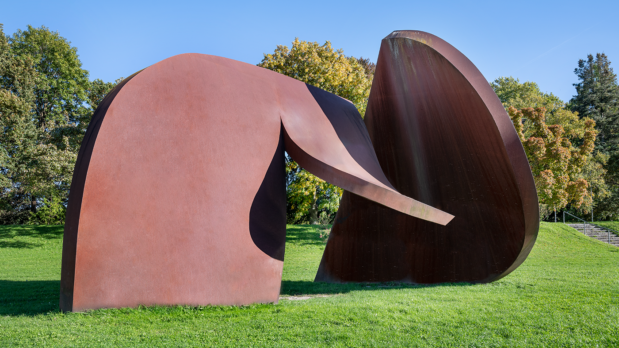
Amadeo Gabino, Hommage à Anton Bruckner, 1998
Gabiano made a close examination of the myth of the machine in his work in the tracks of the Cubists and the Constructivists devising contemporary abstract symbols in stainless steel, Corten steel aluminium and iron.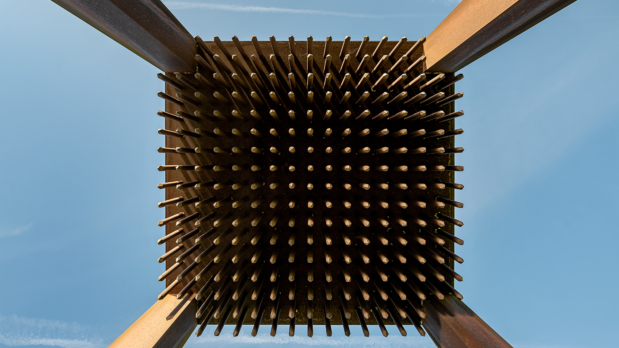
Günther Uecker, Tisch der Austreibung, 1977
From 1957 Uecker developed the theme of the dynamics of light and monochrome images with frames and backgrounds covered with nails. As a member of ZERO he then focused on Kinetic Art using light and large nailed objects.